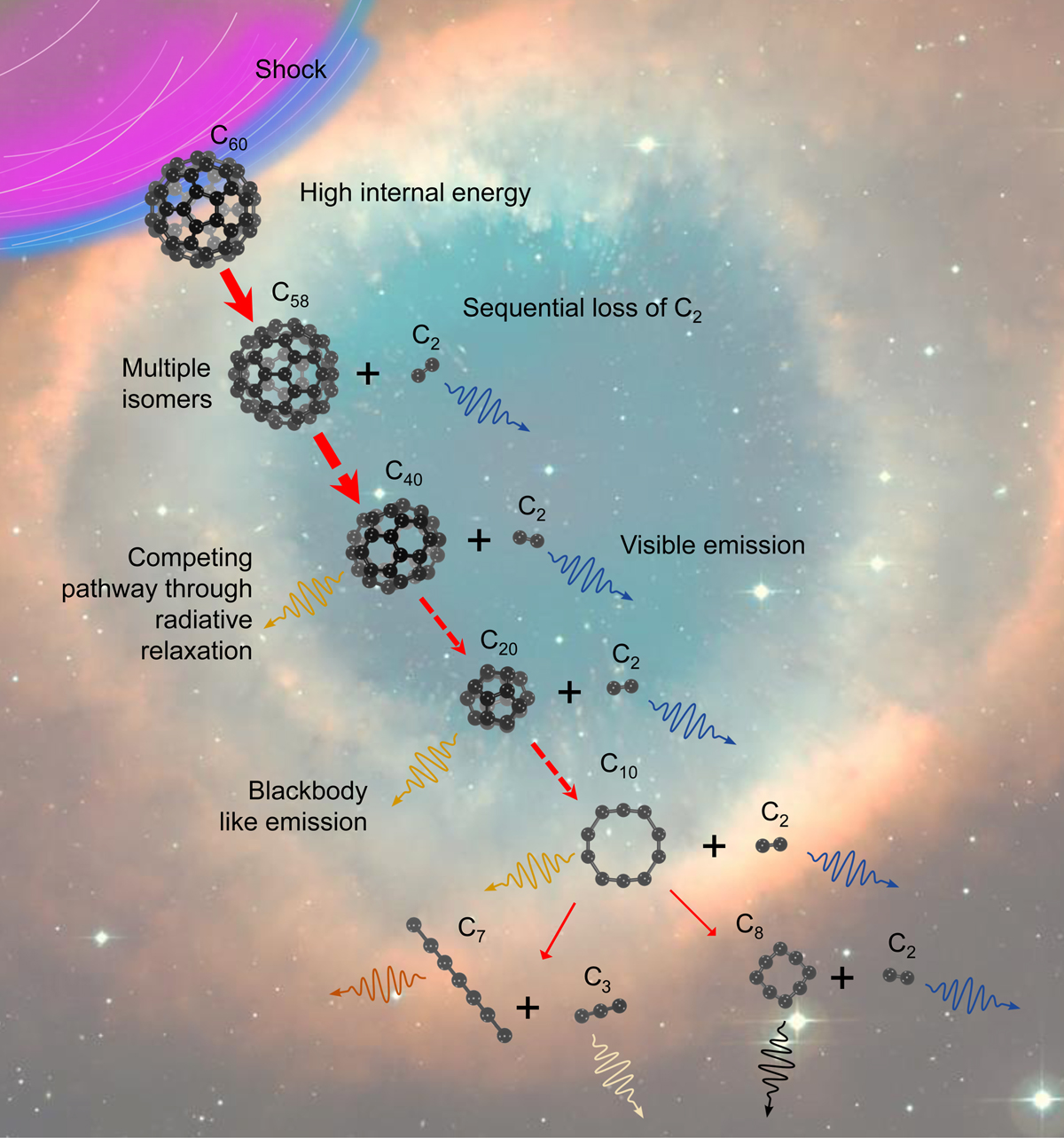Fig. B.1

Download original image
Shock-induced destruction pathways of C60 in the laboratory under constant temperature conditions. The shock-induced pressure rise leads to rapid collisional heating of C60. The high internal energy acquired initiates a sequential process starting with fragmentation into C58 + C2. The break-up of the larger fragment continues, driven by the internal energy remaining in it or acquired through collisions with the bath gas. Below a certain size (less than ~40 carbon atoms), the energy can also be dissipated radiatively (Sect. 5) slowing down the fragmentation process. Because of the presence of hundreds to thousands of isomers for each carbon cluster between 20 and 40 carbon atoms, spectral features are blurred out and the overall emission appears blackbody-like.
Current usage metrics show cumulative count of Article Views (full-text article views including HTML views, PDF and ePub downloads, according to the available data) and Abstracts Views on Vision4Press platform.
Data correspond to usage on the plateform after 2015. The current usage metrics is available 48-96 hours after online publication and is updated daily on week days.
Initial download of the metrics may take a while.


